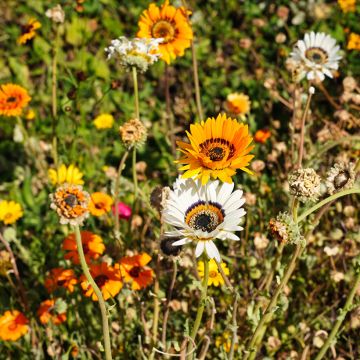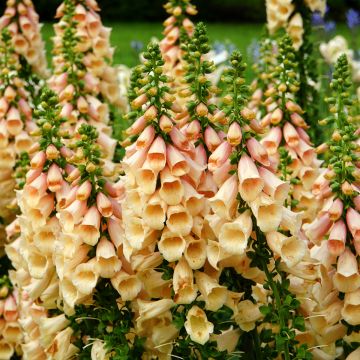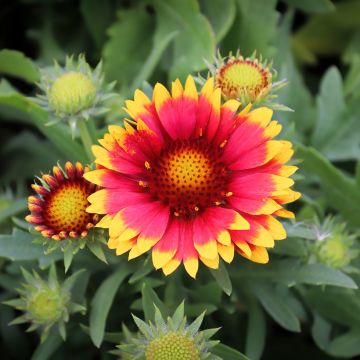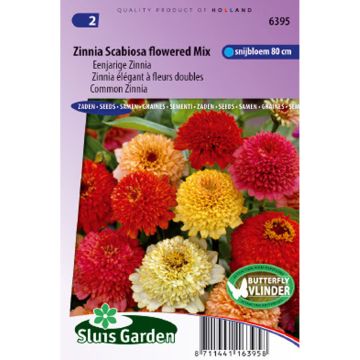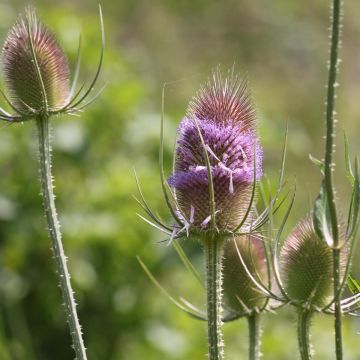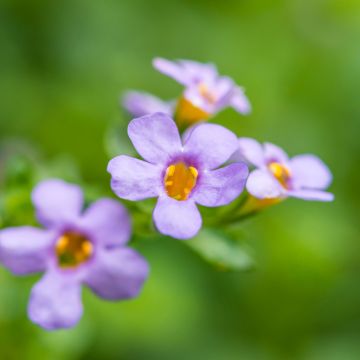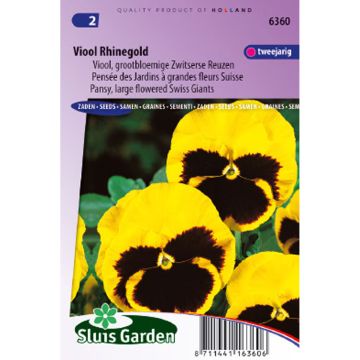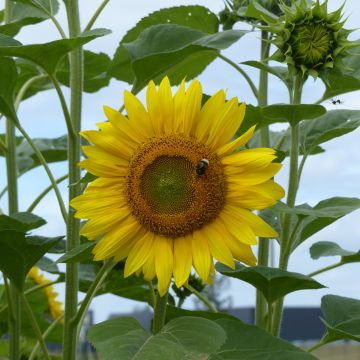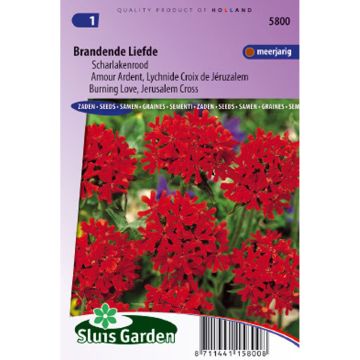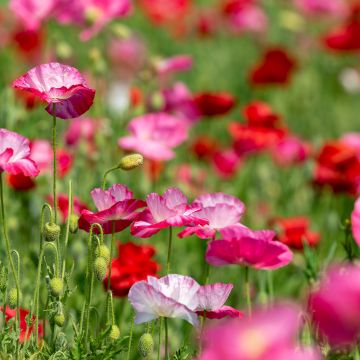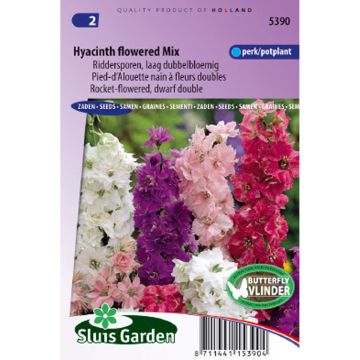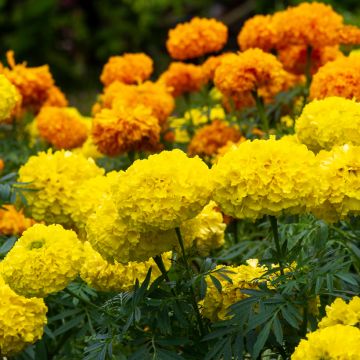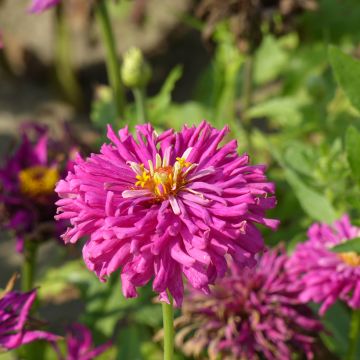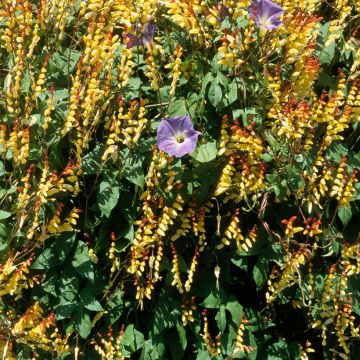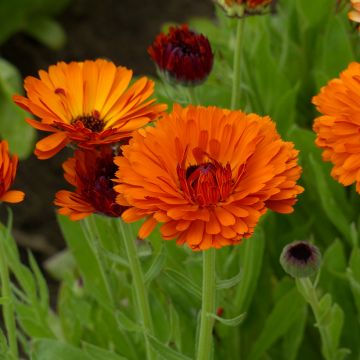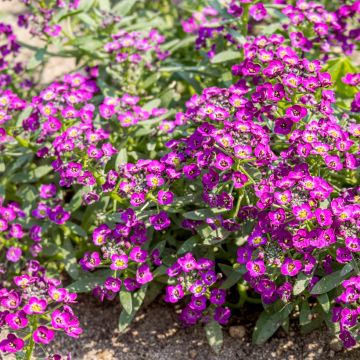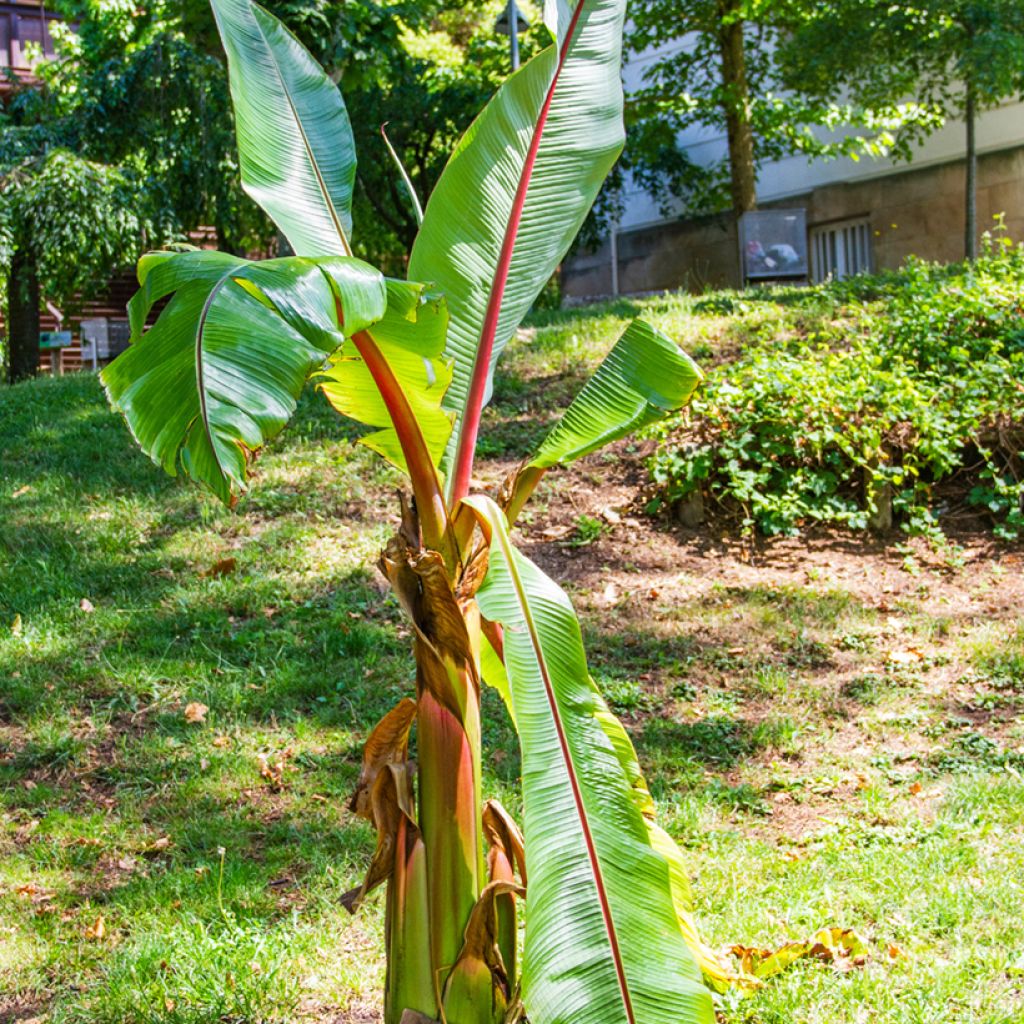

Ensete ventricosum - Ethiopian Banana seeds
Ensete ventricosum - Ethiopian Banana seeds
Ensete ventricosum
False Banana, Snow Banana
It's difficult to get them to germinate, patience... If I could have posted a photo to encourage you...!
Lionel, 28/08/2024
This item cannot be shipped to the selected country
Dispatch by letter from €3.90
More information
Schedule delivery date,
and select date in basket
This plant carries a 6 months recovery warranty
More information
We guarantee the quality of our plants for a full growing cycle, and will replace at our expense any plant that fails to recover under normal climatic and planting conditions.
Seed-only orders are dispatched by sealed envelope. The delivery charge for seed-only orders is €3.90.


Does this plant fit my garden?
Set up your Plantfit profile →
Description
Originating from tropical Africa, the Ensete ventricosum, also known as Ethiopian Banana, is a large, frost-tender, leafy perennial with enormous green leaves with a vibrant red midrib. Its growth rate is so fantastic that it can become a beautiful plant in just one season. It can be grown in large containers on the terrace, as an indoor plant, or in a sheltered location in the ground in milder regions. This beautiful plant requires warmth, and fertile and moist, but well-drained soil.
The Ethiopian banana is a semelparous plant (which dies after fruiting) with tuberous rhizomes, native to many tropical regions of Africa. It is a large banana tree, without suckers at the base, reaching heights of 6 to 10 metres (19.7 - 32.8 feet) or more in its country of origin. In our climates, it rarely exceeds 3m (9.8 ft) in height and 2m (6.6 ft) in spread. It is remarkable for its ornamental qualities and fast growth rate. A seed germinated in spring can grow into a plant of 1.50m (3.3 ft) in just one summer. The leaves are particularly large (1m (3.3 ft) long), long and wide, entire, alternate, dark green and shiny on the upper side, and paler and glaucous underneath, marked by a red central vein. It is a relatively frost-tender plant, evergreen in mild climates and capable of withstanding light frosts of around -4 to -6°C (24.8 - 21.2 °F). The flowering is quite rare in our climates, occurring in late spring. The flowers are surrounded by reddish bracts, overlapping each other in a spiral, forming large spikes and producing small, inedible banana-shaped fruits. Its seeds are large, black, and irregular.
The Ethiopian banana can be used in groups or as a standalone specimen in regions with mild climates, if planted in a wind-sheltered location. It can be a centrepiece for the terrace when placed in a large container to be stored in a cold greenhouse during winter. In this use, it pairs well with other orangery plants such as oleanders, citrus trees, or Strelitzia reginae.
Report an error about the product description
Flowering
Foliage
Plant habit
Botanical data
Ensete
ventricosum
Musaceae
False Banana, Snow Banana
West Africa
Other Thompson and Morgan seeds
Planting and care
Sow the seeds of Ethiopian Banana at any time of year, after soaking them for 24 hours in warm water. Use a fine multi-purpose compost and bury the seeds to a depth of 6 mm (0.2 in) then place inside a polyethene bag or propagator to keep them moist. Germination is slow and irregular and can take 1 to 6 months at 26°C (79°F).
Each seedling that develops should be transferred to a pot filled with well-drained compost, taking care not to damage the fragile roots. Then transplant into the final container or in open ground (in a very mild climate).
Cultivation:
The Ethiopian Banana should be grown in full sun or partial shade, in rich, moist, but well-drained soil, sheltered from the wind. Overwinter frost-free, in a well-lit room and reducing watering. If some leaves change colour in winter, it will not harm the plant's health.
Sowing period
Intended location
-
, onOrder confirmed
Reply from on Promesse de fleurs
Flower seeds
Haven't found what you were looking for?
Hardiness is the lowest winter temperature a plant can endure without suffering serious damage or even dying. However, hardiness is affected by location (a sheltered area, such as a patio), protection (winter cover) and soil type (hardiness is improved by well-drained soil).

Photo Sharing Terms & Conditions
In order to encourage gardeners to interact and share their experiences, Promesse de fleurs offers various media enabling content to be uploaded onto its Site - in particular via the ‘Photo sharing’ module.
The User agrees to refrain from:
- Posting any content that is illegal, prejudicial, insulting, racist, inciteful to hatred, revisionist, contrary to public decency, that infringes on privacy or on the privacy rights of third parties, in particular the publicity rights of persons and goods, intellectual property rights, or the right to privacy.
- Submitting content on behalf of a third party;
- Impersonate the identity of a third party and/or publish any personal information about a third party;
In general, the User undertakes to refrain from any unethical behaviour.
All Content (in particular text, comments, files, images, photos, videos, creative works, etc.), which may be subject to property or intellectual property rights, image or other private rights, shall remain the property of the User, subject to the limited rights granted by the terms of the licence granted by Promesse de fleurs as stated below. Users are at liberty to publish or not to publish such Content on the Site, notably via the ‘Photo Sharing’ facility, and accept that this Content shall be made public and freely accessible, notably on the Internet.
Users further acknowledge, undertake to have ,and guarantee that they hold all necessary rights and permissions to publish such material on the Site, in particular with regard to the legislation in force pertaining to any privacy, property, intellectual property, image, or contractual rights, or rights of any other nature. By publishing such Content on the Site, Users acknowledge accepting full liability as publishers of the Content within the meaning of the law, and grant Promesse de fleurs, free of charge, an inclusive, worldwide licence for the said Content for the entire duration of its publication, including all reproduction, representation, up/downloading, displaying, performing, transmission, and storage rights.
Users also grant permission for their name to be linked to the Content and accept that this link may not always be made available.
By engaging in posting material, Users consent to their Content becoming automatically accessible on the Internet, in particular on other sites and/or blogs and/or web pages of the Promesse de fleurs site, including in particular social pages and the Promesse de fleurs catalogue.
Users may secure the removal of entrusted content free of charge by issuing a simple request via our contact form.
The flowering period indicated on our website applies to countries and regions located in USDA zone 8 (France, the United Kingdom, Ireland, the Netherlands, etc.)
It will vary according to where you live:
- In zones 9 to 10 (Italy, Spain, Greece, etc.), flowering will occur about 2 to 4 weeks earlier.
- In zones 6 to 7 (Germany, Poland, Slovenia, and lower mountainous regions), flowering will be delayed by 2 to 3 weeks.
- In zone 5 (Central Europe, Scandinavia), blooming will be delayed by 3 to 5 weeks.
In temperate climates, pruning of spring-flowering shrubs (forsythia, spireas, etc.) should be done just after flowering.
Pruning of summer-flowering shrubs (Indian Lilac, Perovskia, etc.) can be done in winter or spring.
In cold regions as well as with frost-sensitive plants, avoid pruning too early when severe frosts may still occur.
The planting period indicated on our website applies to countries and regions located in USDA zone 8 (France, United Kingdom, Ireland, Netherlands).
It will vary according to where you live:
- In Mediterranean zones (Marseille, Madrid, Milan, etc.), autumn and winter are the best planting periods.
- In continental zones (Strasbourg, Munich, Vienna, etc.), delay planting by 2 to 3 weeks in spring and bring it forward by 2 to 4 weeks in autumn.
- In mountainous regions (the Alps, Pyrenees, Carpathians, etc.), it is best to plant in late spring (May-June) or late summer (August-September).
The harvesting period indicated on our website applies to countries and regions in USDA zone 8 (France, England, Ireland, the Netherlands).
In colder areas (Scandinavia, Poland, Austria...) fruit and vegetable harvests are likely to be delayed by 3-4 weeks.
In warmer areas (Italy, Spain, Greece, etc.), harvesting will probably take place earlier, depending on weather conditions.
The sowing periods indicated on our website apply to countries and regions within USDA Zone 8 (France, UK, Ireland, Netherlands).
In colder areas (Scandinavia, Poland, Austria...), delay any outdoor sowing by 3-4 weeks, or sow under glass.
In warmer climes (Italy, Spain, Greece, etc.), bring outdoor sowing forward by a few weeks.

































